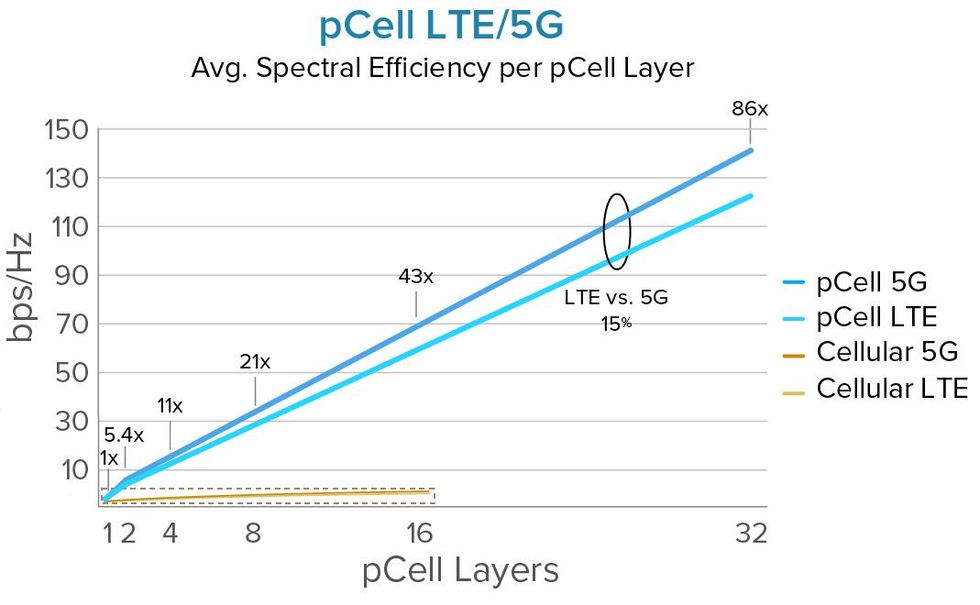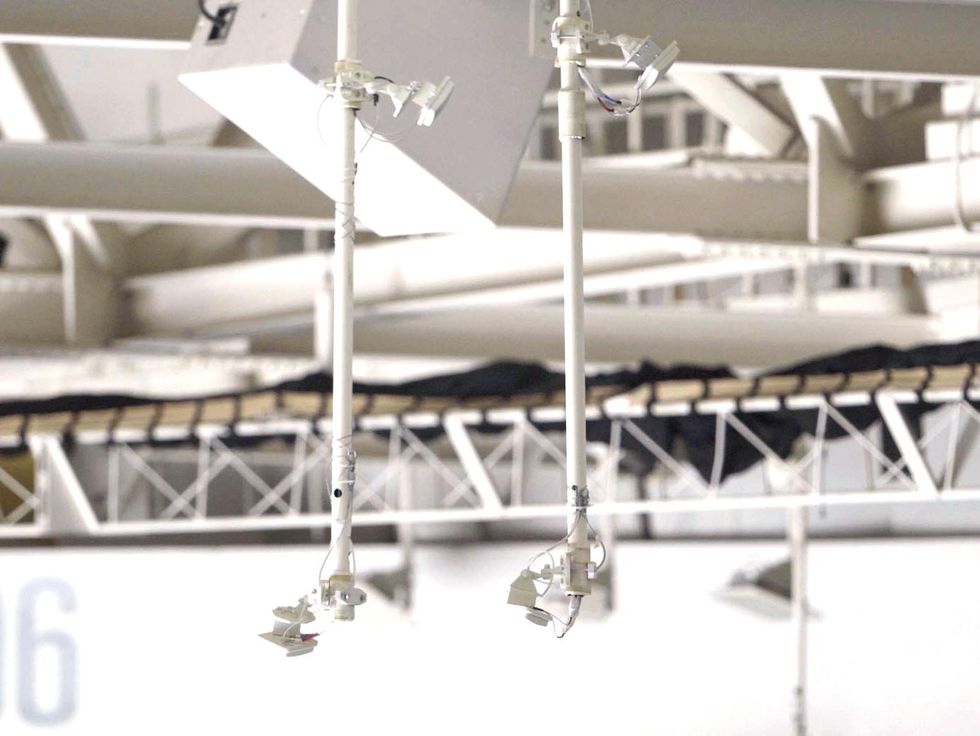In wireless communications, noise from the environment or other signals is almost always seen as something to overcome. The Mountain View, Calif.–based Artemis Networks, however, has a different idea.
Artemis has developed a system in which a group of antennas work together to flood an area with what on the surface looks like noise but in fact resolves into coherent signals at the receiving end. The company’s technique promises to be extremely spectrally efficient.
Artemis’s technology, which it calls pCells (short for “personal cells”), relies on radio waves’ additive nature. That is, when two signals cross paths, they will add to or subtract from one another’s phase, amplitude, and modulation.
Traditionally, this fact is treated as a nuisance by wireless communication schemes. But by deploying multiple antennas working together in an area, Artemis instead sends out carefully crafted noise that coheres into actual signals around individual devices. “So the trick is, yes, garbage comes out of the antennas,” says Steve Perlman, the founder and CEO of Artemis. “But the summation of those very carefully crafted noise signals adds up at the point of reception to be a completely coherent signal.”
Wireless devices, as part of their normal operation, send out regular updates called sounding reference signals (SRS) that enable a network to assess connection strength. A pCell network can use an SRS to establish the location of a specific device and shape a bubble of clear reception just a few millimeters in size around the device’s antenna. In 4G LTE and 5G networks, devices send an SRS every 5 milliseconds, meaning the pCell network can track devices in near–real time.
Artemis’s technology requires enough computer processing to assess where devices are, construct the appropriate noise to transmit so that it will resolve around the devices, and untangle received noise to determine what data has been sent back to the network by devices. Currently, according to Perlman, it can be done with three servers, each with dual 64-core AMD CPUs. He expects the company will be able to get it down to just one server within a year.
According to Perlman, the two big advantages of a pCell network are uniform coverage and spectral efficiency. In a typical network, a device tries to connect to the closest antenna and, if necessary, switch over to a new one when it moves. This creates unstable regions of coverage where the boundaries of individual cells interact. With a pCell network, all of the antennas are working together to blanket the area with the requisite noise. Wherever a device goes, its pCell bubble moves with it.

The other advantage, spectral efficiency, is perhaps more important. While spectral efficiency has been increasing with each new wireless generation, the rate of increase has slowed. A 5G base station using a 4-by-4 MIMO antenna array can send 1.7 times as many bits per second per hertz of bandwidth compared to a 5G base station using just a single antenna. Jump that up to a 16-by-16 array—which has 4 times the total number of antennas as a 4-by-4 array—and the spectral efficiency reaches only 2.9 times as many bits per second per hertz of bandwidth.
In a pCell network, however, a 16-by-16 antenna array can send 43 times as many bits per second per hertz of bandwidth, compared to a single antenna. And it seems to scale beyond that.

Artemis announced its first large-scale pCell installation in May, at the SAP Center in San Jose, Calif., a hockey arena and concert venue. The network uses 56 antennas to cover the 13,000-square-meter arena. “If I increase to 112 antennas,” says Perlman, “there’s no reason for me to believe that it would not double its spectral efficiency” compared to the 56 installed antennas.
The company first announced a practical pCell network back in 2014. The announcement was met with initial skepticism, although according to Giuseppe Caire, a professor of electrical engineering at the Technical University of Berlin, that was (ironically enough) partly due to a miscommunication. “They marketed this thing as ‘We have this revolutionary idea called pCells, it’s totally different from whatever has been done before.’ ” But Caire says the theoretical ideas underpinning the tech—now more generally referred to as cell-free massive MIMO (multiple input, multiple output)—had been circulating in various forms for decades.
Caire was initially skeptical of what Artemis had accomplished, but once he visited the company in San Francisco, he quickly realized the significance of what it had achieved. Caire (who is now a technical advisor to the company) sees as Artemis’s big breakthrough its ability to integrate a cell-free massive MIMO approach with existing 4G LTE and 5G standards.
Now, eight years later, Perlman says any holdup in rolling out pCell networks has never been due to technology. Instead, the bottleneck has always been in getting access to spectrum, he says. After failed attempts to work with existing industry partners, the company eventually decided to go it alone when the Citizens Broadband Radio Service (CBRS) band in the 3.5-GHz band was established by the U.S. Federal Communications Commission in 2017.
Aside from sports arenas and indoor venues like the SAP Center, other potential fits for pCell networks are university campuses, warehouses, and other locations that would otherwise turn to localized private networks or require high cell density. In the future, Caire sees a natural development of cellular technology in which cell-free massive MIMO networks provide coverage in dense, high-traffic areas, while older, cell-based technologies like cell towers continue to provide coverage in rural areas.
Beyond cellular, Perlman sees one of the greatest opportunities for pCell networks in augmented reality. AR requires high data rates and extremely low latencies to feel immersive and prevent motion sickness. If pCell networks can provide uniform and spectrally efficient coverage, they may be a good fit for upcoming AR glasses, such as Apple’s rumored effort.
This story was updated 16 June 2022 to correct the location of the SAP Center.
- Building Your Own Cellphone Network Can Be Empowering, and ... ›
- Can Artemis Deliver 5G Service On Your 4G Phone? - IEEE Spectrum ›
- Steve Perlman: Nokia Deal Legitimizes Artemis' pCell Technology ... ›
Michael Koziol is the news manager at IEEE Spectrum. Previously, he was an associate editor covering telecommunications. He graduated from Seattle University with bachelor's degrees in English and Physics, and earned his master's degree in science journalism from New York University.



